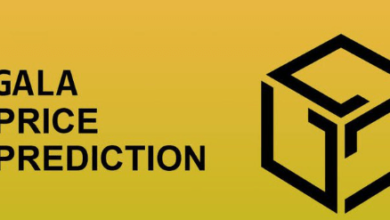Learn about Ethereum vai subir

Introduction to Ethereum
Ethereum vai subir is a decentralized platform that runs smart contracts: applications that run exactly as programmed without any possibility of fraud or third party interference
These apps run on a custom-built blockchain, an enormously powerful shared global infrastructure that can move value around and represent the ownership of property. This enables developers to create markets, store registries of debts or promises, move funds in accordance with instructions given long in the past (like a will or a futures contract), and many other things that have not been invented yet, all without a middle man or counterparty risk.
The project was bootstrapped via an ether presale in August 2014 by fans all around the world. It is developed by the Ethereum Foundation, a Swiss non-profit, with contributions from great minds across the globe.
What is Ethereum vai subir?
Ethereum is one of the most popular blockchain platforms and enables developers to create decentralized applications (DApps) with its own Ethereum Virtual Machine (EVM) which executes code on the Ethereum network.
Thenative Ethereum vai subir of the Ethereum network is called Ether (ETH). ETH is used to pay for transaction fees and computational services on the Ethereum network.
Ethereum has been used to create some of the most popular DApps, such as CryptoKitties, Decentraland, and MakerDAO.
How does Ethereum vai subir work?
Ethereum is a decentralized platform that runs smart contracts: applications that run exactly as programmed without any possibility of fraud or third-party interference.
Ether, the native cryptocurrency of Ethereum, is used to pay for transaction fees and computational services on the Ethereum network.
The Ethereum Virtual Machine (EVM) is a Turing-complete virtual machine that allows anyone to execute arbitrary EVM bytecode. The EVM makes it possible to create decentralized applications (dapps) on the Ethereum blockchain.
Smart contracts are programmable contracts that can automatically execute themselves when certain conditions are met. They are stored on the Ethereum blockchain and can be written in Solidity, a programming language for the EVM.
What are the benefits of Ethereum vai subir?
Ethereum is a decentralized platform that runs smart contracts: applications that run exactly as programmed without any possibility of fraud or third-party interference.
Ethereum is used to build decentralized applications (dapps) on its platform. These dapps can be built on Ethereum’s public blockchain, which is a secure and tamper-proof distributed ledger that records all transactions on the network.
The benefits of Ethereum vai subir include:
-Security: Ethereum’s public blockchain is secured by cryptography and consensus mechanisms that make it tamper-proof and immune to fraud.
Decentralization: Ethereum is decentralized and not controlled by any single entity, making it censorship-resistant. This also makes it more resilient to attacks, as there is no central point of failure.
Flexibility: Smart contracts on Ethereum can be programmed to do anything that is computationally possible, making them very versatile and flexible.
Speed: Transactions on the Ethereum network are confirmed in a matter of seconds, making it much faster than traditional financial systems.
What is the difference between Ethereum and Bitcoin?
Bitcoin and Ethereum vai subir are both decentralized, global platforms that allow users to transact without the need for a middleman. However, there are some key differences between the two.
For one, Ethereum is much more versatile than Bitcoin. While Bitcoin was designed primarily as a digital currency, Ethereum was built with the intention of powering decentralized applications (dapps). This difference in purpose has led to some pretty significant technical distinctions.
For example, Ethereum uses a different blockchain algorithm than Bitcoin – called Proof of Stake instead of Proof of Work. This means that transaction confirmations on the Ethereum network are much faster than on the Bitcoin network. It also requires less energy to run, which makes it more eco-friendly.
Another big difference is that while Bitcoin transactions are anonymous, Ethereum transactions are not. This is because each transaction on the Ethereum network includes a so-called “smart contract” – a piece of code that can execute certain actions based on certain conditions. This makes it possible to track who is sending what to whom on the Ethereum network (unlike on the Bitcoin network, where all transactions are completely anonymous).
Finally, one last distinction between Ethereum and Bitcoin is their respective supply limits. While there will only ever be 21 million Bitcoins in existence, there is no limit to the number of Ether tokens that can be created.
How to buy Ethereum
Ethereum is a decentralized platform that runs smart contracts: applications that run exactly as programmed without any possibility of fraud or third-party interference.
Ether is the native cryptocurrency of the Ethereum platform. It is used to pay for transaction fees and computational services on the Ethereum network.
If you want to buy Ether, you will need to set up a wallet first. We recommend using MyEtherWallet, which is a free, open-source client-side interface for generating Ethereum wallets.
Once you have set up your wallet, you can purchase Ether from one of the many exchanges available online. We recommend using Coinbase, which is one of the most popular and user-friendly exchanges in operation today.
Conclusion
Ethereum is an exciting new technology that has the potential to revolutionize many aspects of our lives. With its unique capabilities and vast possibilities, Ethereum offers immense opportunities for developers, investors, and users alike. From smart contracts to decentralized applications, it will be interesting to see how Ethereum develops over time and if it truly can live up to its promise of being a game-changer in the blockchain space. Keep your eye on Ethereum as we watch this amazing project grow!

